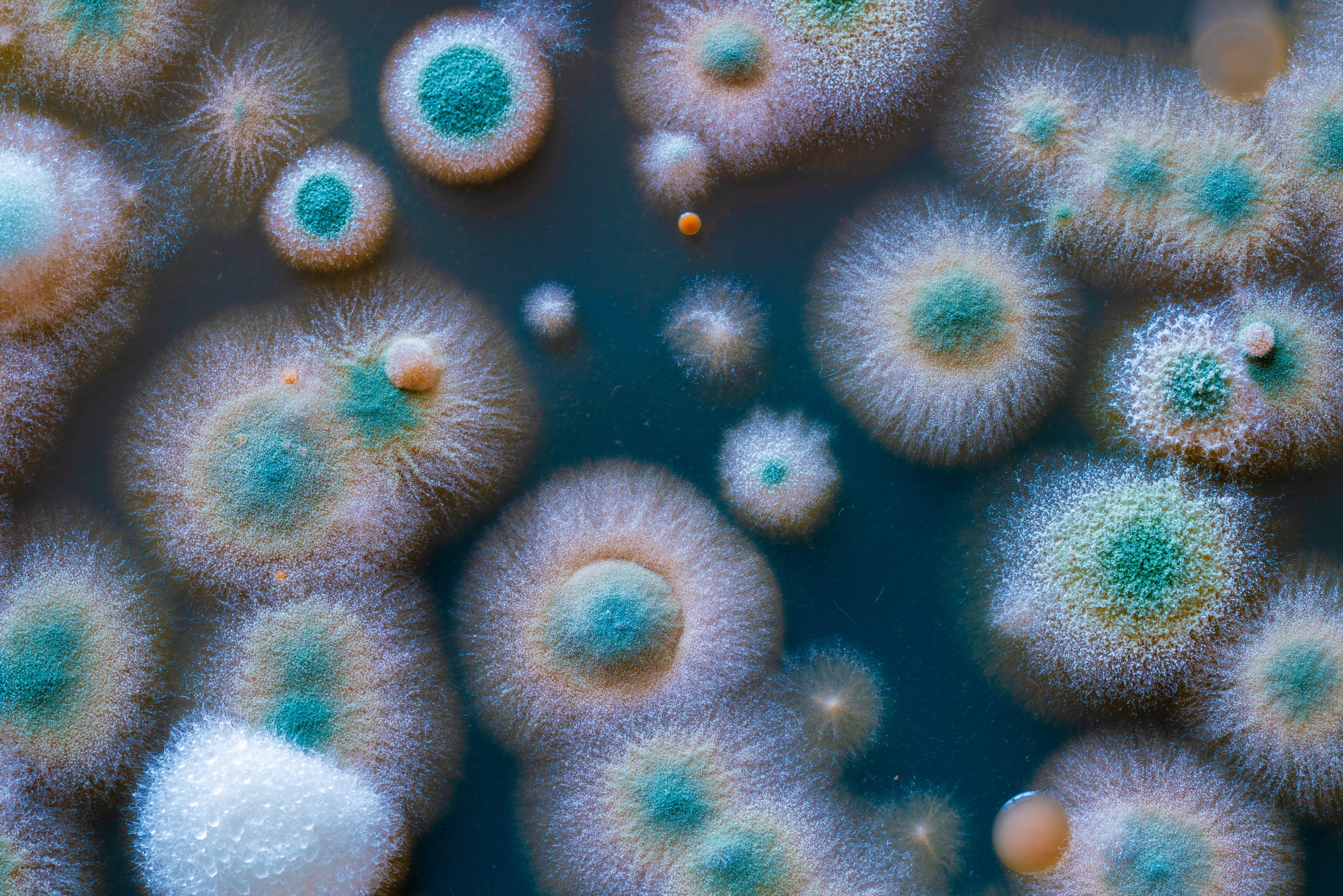Candida or
Yeast Overgrowth
Candida overgrowth or yeast overgrowth, otherwise called Candida albicans or Chronic Candidiasis, can be a common, recurrent issue. Naturopathic medicine and natural therapies offer effective solutions to what can be an annoying and unrelenting health issue.
Candida overgrowth occurs when the naturally occurring levels of yeast – often Candida albicans – reproduces in the body excessively. This occurs when the normal balance between “good” and “bad” microorganisms (specifically Candida albicans) is disrupted. Microbiome disruption is common and secondary to the use of antibiotic or steroid medications, or; a compromised immune system unable to screen for or control yeast populations; or a diet that supports yeast proliferation, among other triggers.
Candida overgrowth can affect your quality of life and become chronic and systemic, especially in immune-compromised persons. Seek professional healthcare if you develop any of the symptoms below, especially if they are recurrent and causing you to suspect you have Candida overgrowth.
Common Symptoms of Candida Overgrowth
- Abdominal Pain & Bloating
- Painful white lesions in the mouth
- Diarrhea or constipation
- Heartburn
- Vaginal itching or burning sensation
- Headaches or Migraines
- Muscle aches and pains
- Poor concentration and memory aka “Brain Fog”
- Fatigue
- Joint pain
- Recurrent ear infections
Natural Treatment of Candida Overgrowth
The treatment for Candida overgrowth is usually three-pronged.
- We test and identify the type of strain of Candida overgrowth you may have. We offer a variety of lab options, blood, stool and urine testing are all available depending on what other parameters we may also need to address (food sensitivities, H. Pylori or SIBO co-infection, or nutrient deficiencies may exist).
- A Candida cleanse program is created for you. Botanical combinations help to kill and eradicate Candida and are often recommended based on the strains that appear on your lab test. Naturopathic treatment for Candida overgrowth depends on your age, tolerance level and the cause of the infection, and can include antifungal botanicals, anti-fungal medications, IV therapy for more systemic or co-infections, and almost always dietary modifications that you can return to as needed.
- We repopulate & replenish the GI tract. Once we reduce Candida population in the body, we increase populations of “good” microorganisms in the body to “crowd out” both the yeast and any other opportunistic bacteria to prevent symptoms from reoccurring.
Naturopathic Approach to any chronic health concern is a process that involves:
- Testing and identification of offending Candida or other agent
- Understanding underlying factors affecting your health, including physical, psychological, emotional and lifestyle factors
- Development of a comprehensive treatment plan
- Implementation and maintenance of that plan through periodic monitoring and adjustment
- Identify and address underlying factors in your lifestyle (e.g., optimize dietary choices, stress-reduction techniques, breastfeeding techniques, etc.) or general health (e.g.,adrenal fatigue, diabetes, recurrent antibiotic use) that may be contributing to Candida overgrowth
- Reduction of Candida populations using anti-fungal herbs
- Correct the Microbiome – Increase “good” bacteria populations using diet and supplements
- Preventing recurrence by strengthening your immune system with botanicals, IV therapy, lifestyle and nutrition.
References
Murray MT, Pizzorno JE. Chronic candidiasis. In: Murray MT, Pizzorno JE, editors. Textbook of natural medicine. 2nd ed. Toronto. Churchill Livingstone; 1999.
Oral Thrush [Internet]. Mayo Foundation for Medical Education and Research; [cited 2010 Jan 9]. Available from: http://www.mayoclinic.com/health/oral-thrush/DS00408.
Environmental Allergies
Spring is a beautiful time of year for those who DO NOT suffer from allergies! Warmer weather, fresh cut grass, soft wispy pollen floating in the breeze – while comforting for most people – cause much grief and insult for allergy sufferers. But not all allergies occur in the spring. For some, symptoms are worse in the summer, fall or even all-year round. Common symptoms include sneezing, wheezing, runny nose, itchy eyes and even itchy throat and can soon sabotage you day-to-day life. Before you reach for the anti-histamines and intra-nasal steroids, consider treating the root cause of your allergies with naturopathic medicine.
How do I know if I have allergies or just a cold?
There are several symptoms to consider to ensure that you have allergies and not a cold:
- You are sneezing in rapid, repeated sequences
- Your nose, ears and throat (especially the roof of your mouth) are itchy
- You do not have a fever or achy muscles
- Your mucosal secretions are clear and runny
- Your symptoms are lasting longer than 10 days
If you’re still not convinced, your Naturopathic Doctor can perform skin or blood tests to confirm whether you are allergic to something.
Why do I have allergies?
Seasonal allergies occur when your immune system overreacts to normally harmless airborne particles. An allergy is an abnormal hypersensitivity to these airborne particles or environmental antigens called allergens. An allergen can include pollen from trees, grasses, weeds, and ragweed, as well as cat or dog dander, dust and moulds. Exposure to an allergen leads to overactive B cells that in turn produce excess Immunoglobulin E (IgE). IgE then triggers the allergic symptoms by activating mast cells (cells that line the mucous membranes of the eyes, nose and throat) that produce histamine. Common symptoms include: runny nose, sinus congestion, headache, fatigue and itchy eyes.
Your Seasonal Allergy Test
Dr. Emina offers a skin-prick test that takes about 20 minutes, following an initial consultation. This test is performed on the forearm by introducing tiny amounts of an allergen under the patient’s skin with a pin-prick. In an allergic patient, the allergen will produce a swollen itchy patch surrounded by an area of redness.
Another option, is a blood draw to measure IgE levels to common Okanagan environmental allergens. The benefit of a blood draw is greater sensitivity, focus and specificity with select allergens for a tailored desensitization program via Sublingual Immunotherapy (SLIT).
Natural Treatment for Seasonal Allergies:
Based on your allergy test results, individually compounded medicines are created. Sublingual Immunotherapy (SLIT) works by delivering low dose drops of these allergens at frequent intervals, two to three times a day, under the tongue to build up the body’s tolerance over time. It is an ideal treatment for patients with an aversion to needles, like young children and those with busy schedules that can’t make appointments for shots. Sublingual immunotherapy has been recognized as an efficient and effective treatment for allergies by the World Health Organization and has been used extensively in Europe for over 15 years.
Ultra Low Dose Enzyme Activated Immunotherapy is a novel and effective option in the treatment of all forms of allergies. Patients who have used this therapy have found it to be cost effective and enjoy the fact that no further testing is required in order to commence therapy. With less frequent injections, it is time-saving and preferred by many patients, especially those who are weary of needles. It is a very safe therapy, when compared to conventional injections (that can be life-threatening).
More Natural Solutions for Seasonal Allergies
Additional support for allergies include botanical medicine specifically formulated for the treatment of hay fever, sinusitis, upper respiratory catarrh and colds. Regular IV Vitamin C injections help the immune system to better manage symptoms. In-office Nebulized Glutathione breathing therapy can help to break up mucous congestion to help you better expectorate as was as boost your immune system and detoxification pathways. There are simple, drug-free and pill-free things you can do at home too to help decrease your symptoms! Find out more from your Naturopathic Physician
Mold Toxicity & Mycotoxins

Mold illness comes in many different forms, with the most widely acknowledged forms being allergic and infectious, and the more controversial form being mycotoxicosis and Chronic Inflammatory Response Syndrome (CIRS).
Molds and their secondary metabolites, mycotoxins, have taken the medical community by storm in recent years. There were pediatric pulmonary hemorrhaging cases in Cleveland in 1994, followed by the evening news report of the Stachybotrys epidemic in Hollywood and the development of Dr Ritchie Shoemaker’s theory of CIRS in the late 1990s and early 2000s. Mold and their mycotoxins have been around for a long time; even religious texts such as Leviticus take notice of the dangers of mold.
Mycotoxins are ionophores measuring approximately 0.03 microns in length and weighing approximately 500-1500 daltons. As airborne particles smaller than 1.0 micron, they are easily inhaled. Human and animal studies have shown that toxicity1,2 and increased body burden3 can result from inhaling mycotoxins. Their minute size and combined hydrophobic and hydrophilic nature allow them to pass easily into and out of cells, which makes them difficult to eradicate from the living system. Thus, bioaccumulation can result. Toxicity from mycotoxins is compounded by mutations in detoxification genes; animal studies also suggest that mycotoxins have an inherent ability to hinder detoxification mechanisms by depleting glutathione (GSH), interfering with GSH pathways,4-7 and downregulating the transcription factor, NRf2.8 Chronic infections should also be considered in such cases, as their presence can further complicate unwinding of the complex toxicology at hand.
Common Symptoms of Mycotoxicosis include:
- Fatigue, weakness
- Muscle aches, cramps, and unusual pain (ice-pick or lightning bolt sensations as in CIRS)
- Headaches and photosensitivity (sensitivity to bright lights)
- Chronic sinus congestion
- Cough, chest pain and shortness of breath
- Abdominal pain (IBS), often secondary diarrhea
- Joint pain, tendonitis, morning stiffness
- Cognitive impairment: difficulties with recent memory, assimilation of new information, word finding, handling numbers, confusion, sustaining concentration, disorientation, “brain fog”
- Skin sensitivity to light touch
- Mood Swings, appetite swings, sweats (often at night), difficulty with temperature regulation
- Numbness, tingling, (often non-anatomic), vertigo, metallic taste in the mouth
- Excessive thirst, frequent urination, sensitivity to static shocks, (doorknobs, light switches, car handles, kisses)
- Impotence
- Menorrhagia (Heavy periods)
- Nausea & vomiting
Unique symptoms that are quite specific to mycotoxicosis can include:
- Electrical shocks
- Ice-pick pains
- Paresthesia’s (non-dermatomal prickling sensation or numbness & tingling)
- Internal Vibration
- Tremors
- Increased sensitivity to everything.
If you feel like you may be suffering from mycotoxicosis but have been diagnosed with another condition, great mimickers of mold toxicity include:
- Fibromyalgia
- Chronic Fatigue Syndrome
- “Atypical MS, RA, Alzheimer’s, Parkinson’s
- Asthma
- Chronic Sinusitis
- As well as Psychiatric Conditions such as: Anxiety, Depression, depersonalization, cognitive impairment, mood swings and OCD.
Physical Exam
Pertinent physical exam findings included the following: orthostatic hypotension, lower oxygen saturation, delayed capillary refill, positive hippus test, dermatographism, positive Romberg, anosmia (reduce ability to smell) failed 2-point discrimination on palms and shins, and failed vibration sensation. Failure of an in-office analogue visual contrast sensitivity (VCS) test in both eyes and failed the Montreal Cognitive Assessment (MoCA) with deficits demonstrated in memory, delayed recall, and attention.
Laboratory Workup
Mycotoxin Lab Test:
Mycotoxin Screening with liquid chromatography/mass spectrometry through Great Plains Laboratories (GPL) is commonly used in our office as it is quite accurate, reproducible and specific to the molds that it screens for. Specifically, GPL offers this test as a urine collection and screens for the following molds:
- Zearalenone (made by fusarium)
- Aflatoxin M1
- Ochratoxin A
- Sterigmatocystin (related to Aflatoxin)
- Riordin E (macrocyclic tricothecene)
- Verrucarin A (macrocyclic tricothecene)
- Enniantin B1 (made by fusarium)
- Gliotoxin
- Mycophenolic acid
- Chaetoglobosin
- Citrinin
The second most common test that is used in our office is a Serum test (blood draw) from Alletess Labs and includes an Expanded Mold Immunoreactivity Panel with 16 Molds and a total of 47 items being tested
- Alternaria alternate
- Aspergillus fumigatus
- Aureobasidium pullulans
- Candida albicans
- Chaetomium globosum
- Cladosporium herbarum
- Epicoccum purpurascens
- Fusarium proliferatum
- Mucor racemosus
- Penicillium chrysogenum
- Phoma betae
- Rhizopus nigricans
- Setomelanomma rostrate
- Stachybotrys atra (IgG/IgA only)
- Stemphylium herbarum
- Trichoderma viride
Patients are encouraged to precede any mycotoxin testing – under the advisement of their doctor – with a 7-Day provocation that may involve glutathione detoxification, IR Saunas, hot tubs or other forms of sweating prior to collection of either 1. First morning urine sample or 2. In-office blood draw. Physician supervision is critical in that many patients with suspected mycotoxicosis are not able to tolerate even small doses of detoxification protocols and thus provocation needs to be adjusted for the individual to avoid suffering ill-effects.
Other tests may include:
- CBC with differential & Iron panel.
- Liver and Kidney Chemistry as Elevations of AST, ALT, GGT, and LDH can occur.
- Heavy Metal Toxicity with Chelation provocation
- Organic Acids Test with Great Plains Laboratory
- Lyme and coinfection testing including IgM & IgG serology forBorrelia burgdorferi (ELISA & Western Blot, not reflex), Babesia microti, Bartonella (henselae & quintana), Mycoplasma pneumoniae, Ehrlichia chaffeensis, and Anaplasma phagocytophilum.
- EBV panel to screen for results for VCA-IgG, EA-IgG, and EBV-NA.
Home Testing: It is important to identify and remove the source of contamination
- IMMUNOLYTICS is a company that will ship you some petri dishes, to test your home for Mold. Once received, you will leave the dishes open for 2 hours in any suspected rooms in your home or office, then replace the lid and rest for 3 days. After 3-5 days, patients are encouraged to LOOK at the plate – 50% of the mold is often non-toxic, while the other 50% is toxic – so mail it back, even if you don’t see anything!! (It is important to mark EACH room per petri dish prior to shipping back).
- ERMI (MSQPCR) is another lab that provides at-home testing. Samples are taken from the wall cavity and may demonstrate elevated spore counts ofAspergillus fumigatus, Stachybotrys chartarum, Aspergillus ochraceus, and Aspergillus niger. All of these are producers of mycotoxins, specifically gliotoxin, ochratoxin A, and the macrocyclic trichothecenes.
Patients suffering from mold exposure can become very ill and accurate diagnosis with testing and treatment can provide the answers they are looking for. We encourage all patients to have a physical exam with Dr. Emina Jasarevic, Naturopathic Physician, in addition to any needed testing.
Not all mold cases are CIRS, but Mold exposure can suppress the immune system, leading to an awakening of chronic silent infections. In addition, multiple chemical sensitivity following mold and mycotoxin exposure is not uncommon. Many patients come in wanting glutathione IV’s or liposomal supplementation, however, we would like to emphasize that glutathione does not cure everything and can make things worse for patients with an overburdened immune system and impaired detoxification. Binders can also cause unintended ill effects, and different people will tolerate them to different degrees – so we monitor patients closely to ensure their dosing is well-tolerated but still effective. Lastly Intranasal Antifungal medications may be prescribed but is not always required in every mold-exposed patient. Every mold case is unique, and treatments can vary from 6 months to 5 years, depending on severity of exposure and illness.
References:
- Creasia DA, Thurman JD, Wannemacher RW Jr, Bunner DL. Acute inhalation toxicity of T-2 mycotoxin in the rat and guinea pig.Fundam Appl Toxicol. 1990;14(1):54-59.
- Creasia DA, Thurman JD, Jones LJ 3rd, et al. Acute inhalation toxicity of t-2 mycotoxin in mice.Fundam Appl Toxicol. 1987;8(2):230-235.
- Brasel TL, Campbell AW, Demers RE, et al. Detection of trichothecene mycotoxins in sera from individuals exposed toStachybotrys chartarum in indoor environments. Arch Environ Health. 2004;59(6):317-323.
- Guerre P, Eeckhoutte C, Burgat V, Galtier P. The effects of T-2 toxin exposure on liver drug metabolizing enzymes in rabbit.Food Addit Contam. 2000;17(12):1019-1026.
- Huang L, Duan C, Zhao Y, et al. Reduction of Aflatoxin B1 Toxicity by Lactobacillus plantarum C88: A Potential Probiotic Strain Isolated from Chinese Traditional Fermented Food “Tofu.”PLoS One. 2017;12(1):e0170109.
- Yılmaz S, Kaya E, Comakli S. Vitamin E (α tocopherol) attenuates toxicity and oxidative stress induced by aflatoxin in rats.Adv Clin Exp Med. 2017;26(6):907-917.
- Choi KC, Chung WT, Kwon JK, et al. Chemoprevention of a flavonoid fraction from Rhus verniciflua Stokes on aflatoxin B1-induced hepatic damage in mice.J Appl Toxicol. 2011;31(2):150-156.
- Chaudhary M, Rao PV. Brain oxidative stress after dermal and subcutaneous exposure of T-2 toxin in mice.Food Chem Toxicol. 2010;48(12):3436-3442.
- Sugiura H, Ichikawa T, Liu X, et al. N-acetyl-L-cysteine inhibits TGF-beta1-induced profibrotic responses in fibroblasts.Pulm Pharmacol Ther. 2009;22(6):487-491.
- Qu X, Li Q, Wang X, et al. N-acetylcysteine attenuates cardiopulmonary bypass-induced lung injury in dogs.J Cardiothorac Surg. 2013;8:107.
- Felton VM, Borok Z, Willis BC. N-acetylcysteine inhibits alveolar epithelial-mesenchymal transition.Am J Physiol Lung Cell Mol Physiol. 2009;297(5):L805-L812.
- Zonta YR, Martinez M, Camargo ICC, et al. Melatonin Reduces Angiogenesis in Serous Papillary Ovarian Carcinoma of Ethanol-Preferring Rats. Int J Mol Sci. 2017;18(4). pii: E763. doi: 10.3390/ijms18040763.
- Shin NR, Park JW, Lee IC, et al. Melatonin suppresses fibrotic responses induced by cigarette smoke via downregulation of TGF-β1.Oncotarget. 2017;8(56):95692-95703.
- Chen K, Chen W, Liu SL, et al. Epigallocatechingallate attenuates myocardial injury in a mouse model of heart failure through TGF-β1/Smad3 signaling pathway.Mol Med Rep. 2018;17(6):7652-7660.
Heavy Metal Toxicity
Heavy metals are ubiquitous. Arsenic, mercury, cadmium, lead and aluminum, permeate our environment, leech into our waters and sequester in our food chain. We breathe them in the air. We absorb them through our skin. We eat them in foods like fish and chicken, even nut butters and cereals.
Normally, our bodies can process and eliminate them in small amounts. But if we take heavy metals in faster than our body can excrete them, they will accumulate and poison us in a multitude of ways that predispose us to pain and chronic disease.
How Toxic Are Heavy Metals?
Toxic metals look similar to essential minerals in our bodies and they can be erroneously “swapped in” instead of the proper essential mineral. This change disrupts our energy production and depletes our nutrients. The toxic metals inhibit our enzyme systems that keep us healthy, and accumulate in our tissues, leading to organ and connective tissue damage.
“Toxins and heavy metals are ubiquitous in our environment. They increase our total toxic body burden, damage our healthy cells and tissues, and lead to chronic disease, as we accumulate faster than we are able to detoxify” – Dr. Emina Jasarevic, ND
Symptoms of Heavy Metal Poisoning
- Childhood learning disabilities
- Nervous system disorders
- Immune dysfunction
- Depression
- Fatigue
- Muscle weakness & pain
- Anemia
- Skin rashes
- High blood pressure
- Memory loss
- Diarrhea
- Constipation
- Nausea
- Irritability
- Tremors
- Cancer
- Hyperactivity
- Behavioural disorders
- Depression, dementia
- Headaches
- Vertigo
- Paralysis
- Sleep disorders
- Vision, hearing and smell disorders
Sources of Heavy Metal Contamination
In Naturopathic Medicine, in order to become healthy, one must “remove obstacles to cure.” You must identify and remove the current sources of expsoure. Heavy metals are ubiquitous and can be found everywhere. This is just a short list:
- Aluminum cookware
- Amalgam fillings (silver fillings in your teeth)
- Drinking water
- Air pollution
- Tobacco
- Seafood
- Pesticides
- Medications
- Cosmetics
- Fertilizers
- Old paint
- Anti-perspirants
- Conventional, non-organic food
The Integrative Approach to Heavy Metal Detoxification
It doesn’t take much to reach a toxic level of heavy metals and they are difficult to cleanse from your system. Believe me, foot baths don’t work! There is no scientific evidence to support this. But if you find a research study – please email me!
Fortunately, there are effective methods to detoxify your system of heavy metals. Intravenous Chelation Therapy is the number one treatment for heavy metal toxicity, followed by oral chelation medications. IV chelation therapy has been around over 70 years now. There are hundreds of studies to support the success and health benefits of Chelation Therapy. Currently, there are multiple ongoing clinical trials all over North America, providing robust results in overall health, from cardiovascular disease to diabetes. We can assess your level of toxicity and work with you to remove them from your body as well as educate you on ways to further reduce contamination and re-exposure.
Heavy Metal Toxicity Testing
Heavy metal toxicity can be difficult to diagnosis because only the most acute exposure will show on blood work. However, through a combination of laboratory and clinical tests we can measure your retention of heavy metal toxins and chart your detoxification process.
Heavy Metal Toxicity Treatment and Support
Two common questions that patients ask are:
- How many treatments do I need?, and;
- How long does it take to treat heavy metal toxicity?
The answer: It depends.
Treatment numbers and length of time will always depend on how high your levels are and how well your body is able to detoxify. Not everyone will benefit from the same treatment procedure as each of us has varied levels of toxicity, sensitivity with varying degrees of retention and excretion capacity, and our own biochemical makeup when it comes to liver enzymes and genetic polymorphisms DNA.
We will build a safe and effective protocol for you based on the following steps:
1. Targeted IV Chelation – chemicals that selectively bind with certain metals – to remove the toxic metals from your system. Chelators act like “Claws” or a baseball mit, they claw or catch the heavy metal in the glove and carried out of the body through our organ s of elimination such as. We do not absorb these medications, They are excreted completed from your body within 3-5 days, along with the toxins
2. Rebuild Nutrient Levels that have been depleted by the toxins, during treatment and at the end, so you can more effectively excrete heavy metals and block their absorption in the future.
3. Support Healing of tissues damaged by heavy metal toxicity.
4. Learn methods to avoid further contamination – there is an entire wealth of knowledge to learn here and we help you navigate through this, starting with the most basic levels.
Persistent Organic Pollutants:
Pesticides, Herbicides, Fungicides & More
Every day, we are exposed to hundreds of toxic chemicals through products like pharmaceuticals, pesticides, packaged foods, household products, and environmental pollution. As we have become more exposed to chemical-laden products and to toxic chemicals in food, air, and water, we have been confronted with an accelerating rate of chronic illnesses like cancer, heart disease, chronic fatigue syndrome, chemical sensitivity, autism spectrum disorders, ADD/ADHD, autoimmune disorders, Parkinson’s disease, and Alzheimer’s disease.
“You are what you eat, think, breathe and drink.” – Dr. Emina Jasarevic, ND
Because exposure to environmental pollutants has been linked to many chronic diseases, screening for toxic non-metal exposures can provide insight into complex symptoms that may have no apparent diagnosis or underlying cause. A comprehensive Toxic Non-Metal Chemical profile screen (GPL-Tox) is available for the presence of 173 different toxic chemicals including organophosphate pesticides, phthalates, benzene, xylene, vinyl chloride, pyrethroid insecticides, acrylamide, perchlorate, diphenyl phosphate, ethylene oxide, acrylonitrile, and more.
Mitochondria & Your Health
A recent update in this comprehensive toxicology screen now includes Tiglylglycine (TG), a marker for mitochondrial disorders resulting from mutations of mitochondrial DNA. These mutations can be caused by exposure to toxic chemicals, infections, inflammation, and nutritional deficiencies.
Mitochondrial research, restoration and support has been emerging in the last 5-10 years in medicine. Mitochondria are “the little engines” in every cell in the body but are especially important to organs that utilize large amounts of energy, such as the muscles, heart, and brain. The mitochondria also have several other important functions in the cell, including steroid synthesis, calcium regulation, free radical production, and the induction of apoptosis or programmed cell death, all of which are involved in the pathogenesis of numerous disorders.
The marker used in the GPL-TOX profile indicates mitochondrial dysfunction by monitoring a metabolite that is elevated in mitochondrial deficiency of cofactors such as NAD+, flavin-containing coenzymes, and Coenzyme Q10. Disorders associated with mitochondrial dysfunction include autism, Parkinson’s disease, and cancer
Disorders Relevant to Toxic Exposures Include:
- Alzheimer’s Disease
- Amyotrophic Lacteroclerosis (ALS)
- Anxiety Disorder
- Arthritis
- Asthma
- Attention Deficit with Hyperactivity (ADHD) Autism
- Autoimmune Disorders
- Bipolar Disorder
- Cancer
- Chronic Fatigue Syndrome
- Crohn’s Disease
- Depression
- Developmental Disorder
- Epilepsy
- Fibromyalgia
- Irritable Bowel Syndrome
- Mitochondria Disorder
- Multiple Sclerosis
- Obsessive Compulsive Disorder (OCD) Occupational Exposures
- Parkinson’s Disease
- Schizophrenia
- Seizure Disorders
- Systemic Lupus Erythematosus
- Tourette Syndrome
- Ulcerative Colitis
Glyphosate: The Insidious Modern Day Toxin
Glyphosate is the world’s most widely produced herbicide and is the primary toxic chemical in Round-UpTM, as well as in many other herbicides. Usage of glyphosate amplified after the introduction of genetically modified (GMO) glyphosate- resistant crops that can grow well in the presence of this chemical in soil. More than 90% of corn and soy used are now of the GMO type. In addition, non-GMO wheat is commonly treated with glyphosate as a drying procedure.
Another concern is that the toxicity of the surfactant commonly mixed with glyphosate, polyoxyethyleneamine (POEA), is greater than the toxicity of glyphosate alone (1). In 2014, Enlist DuoTM, an herbicide product which contains a 2,4-dichlorophenoxyacetic acid (2,4-D) salt and glyphosate, was approved for use in Canada and the U.S. for use on genetically modified soybeans and genetically modified maize, both of which were modified to be resistant to both 2,4-D and glyphosate. 2,4-D has many toxic effects of its own and can be measured in the GPL-TOX test.
Health Impacts & Research on Glyphosate
Recent studies have discovered glyphosate exposure to be a cause of many chronic health problems. It can enter the body by direct absorption through the skin, by eating foods treated with glyphosate, or by drinking water contaminated with glyphosate.
- A recent study (2) stated that a coherent body of evidence indicates that glyphosate could be toxic below the regulatory lowest observed adverse effect level for chronic toxic effects, and that it has teratogenic, tumorigenic and hepatorenal effects.
- The World Health Organization International Agency for Research on Cancer published a summary in March 2015 that classified glyphosate as a probable carcinogen in humans (3).
- Studies have also indicated that glyphosate disrupts the microbiome in the intestine, causing a decrease in the ratio of beneficial to harmful bacteria (4).
- Current research indicates that disruption of the microbiome could cause diseases such as metabolic disorder, diabetes, depression, autism, cardiovascular disease, and autoimmune disease.
Eating non-GMO and organic foods and drinking reverse osmosis water are two of the best ways to avoid glyphosate exposure. A recent study showed that people eating organic food had considerably lower concentrations of glyphosate in the urine (2).
References
- Bradberry SM, Proudfoot AT, Vale JA. Glyphosate poisoning. Toxicol Rev. 2004;23(3):159-67.
- Mesnage R et al. Major pesticides are more toxic to human cells than their declared active principles. Biomed Res Int. 2014: 179691
- Samsel A, Seneff S. Glyphosate, pathways to modern diseases II: Celiac sprue and gluten intolerance. Interdiscip Toxicol. 2013;6:159-184.
- Samsel A, Seneff S. Glyphosate, pathways to modern diseases III: Manganese, neurological diseases, and associated pathologies. Surg Neurol Int. 2015; 6: 45.
More Information Coming Soon!
More Information Coming Soon!
More Information Coming Soon!

What is MCAS?
MCAS, also known as mast cell activation syndrome, is a condition where mast cells in your body have an overactive response. Mast cells are key players in your immune system, and they are normally responsible for initiating inflammation, in order to activate and alert your immune system. These cells essentially tell your immune system that something is wrong, by releasing molecules that cause inflammation.
In healthy immune systems, mast cells play a vital role. Once the immune system has dealt with the problem, whether it be a virus, bacteria or foreign body, the inflammation subsides and the body returns to its normal state.
However, MCAS occurs when these mast cells misread signals and malfunction, causing them to release inflammatory molecules far more often than they should.
The result is chronic inflammation and immune activation, for seemingly no reason.
What are the Common Symptoms of MCAS?
- Hives, skin itching or rash
- Sweating
- Swelling in various parts of the body
- Eye redness, irritation or itching
- Itching or running nose
- Nasal congestion, trouble breathing or wheezing
- Swollen tongue
- Throat irritation or itching
- Low blood pressure
- Increased heart rate
- Headache
- Fatigue
- Diarrhea
- Abdominal swelling, pain or discomfort

How is MCAS Diagnosed?
Your doctor will ask about your symptoms and will take a look at your medical history. MCAS is most often diagnosed via a blood test, or simply based on your constellation of symptoms. While serum testing is an option, it is not always reliable or available. As a result, your doctor may also order urine tests in order to rule out other conditions.

Treatment Options for MCAS
Suffering from MCAS can feel exhausting and it often takes a long time to get the right diagnosis. However, the good news is that MCAS can be well-managed with lifestyle and dietary changes and many patients can become symptom-free.
Treating MCAS often requires a multi-pronged approach. A combination of lifestyle changes and a detailed treatment plan will give patients positive results and relief from their symptoms.
On a basic level, treatment for MCAS starts with:
- Reducing stress
- Avoiding possible MCAS triggers
- Eating low-histamine foods
- Increasing exercise
- Taking supplements
- Using low-doses of naltrexone
Let’s dive into each of these treatments and take a closer look at how they can be applied to your lifestyle.
Address The Stress in Your Life
A lesser known contributor to MCAS symptoms is stress. Mast cells are normally situated at the nerve endings in your body. They work closely with your nervous system to create a feedback loop between neurotransmitters, in order to activate the immune system.
This means that it is possible for your physiological and emotional state to have an effect on your mast cells. When your nervous system and immune system are on high alert for long periods of time, it can cause mast cell degranulation.
When your mental state consistently communicates to your body that you are feeling anxious or unsafe, your mast cells will be on high alert, and ready to respond at a moment’s notice. That’s why it is important to address your stress levels, any residual trauma, or active life stressors in order to assist with your recovery from MCAS.
Eat a Diet Low in Histamines
MCAS causes your histamine levels to rise, which causes inflammation and many of the symptoms associated with MCAS. One of the first things you should address is your diet. Try to eliminate histamines in your diet wherever possible.
Low histamine diets can be confusing. Here is a comprehensive list of foods that are ok and not ok to eat when you are starting out on your low-histamine diet.
When you are following this type of diet, it is important to listen to your body. Food sensitivities are a complex issue, and foods that work for one patient may not have the same results on another. Experiment and keep an open mind while you are trying to determine which foods work best for your body.
Identify MCAS Triggers and Toxins
Research shows that there is not one single cause of MCAS, rather, various different things can disrupt your mast cells and cause unwanted inflammation.
Often, one of the most common triggers for mast cell disruption is mold in your environment. Mold can be difficult to detect in your home or workplace, so it is important to have the area tested for mold and have the mold removed wherever possible.
Likewise, if your body is exposed to several different immune triggers at once, it can cause your mast cells to overreact at even the slightest of triggers.
This is why it’s important to bring your attention to any underlying factors that could be affecting your immune system.
Often this includes:
- Mold exposure – at work or in the home
- Underlying infections in your body
- Excessive exposure to toxins in your diet or in your environment
Over exposure to these common triggers can cause disturbances with your mast cells and trigger a case of MCAS.
An important part of treatment and recovery is identifying these toxins and working proactively to remove them.
Increase Your Exercise and Sweating
Once you have started eating a low-histamine diet and are working towards removing triggers from your surroundings, it is important to start thinking about how you can remove the existing toxins from your body.
The key organs that will do this naturally are your kidneys and your liver. However, exercise is also a great way to help release toxins and flush them out of the body. Sweating does not remove all toxins from your body, but it is a good start to getting rid of pollutants such as trace amounts of metals.
Exercise also releases endorphins, which will help combat any feelings of stress you may have. It is important to aim for 150 minutes of exercise per week.
Take a DAO Enzyme Supplement
Patients who have histamine sensitivity resulting in MCAS can take a DAO or diamine oxidase supplement. This is the main enzyme that degrades histamines in your body.
DAO supplements, also known as histamine blockers, can help your body process and combat any extra histamines in the diet.
Consider Low-Dose Naltrexone
Talk with your doctor before taking low-dose naltrexone. This medication was traditionally used to block opioid receptors in the brain, traditionally meant to help those withdrawing from opioid medications.
However, it has shown promise in treating MCAS as well. An interesting side effect of naltrexone is increased endorphins, which is the chemical that is produced during exercise to make us ‘feel good.’ This can have a positive effect on the immune system, by helping it balance and regain normal function.
Naltrexone also has anti-inflammatory properties, which make it a great tool for reducing inflammation in your body.
The Naturopathic Approach to MCAS
In taking a more naturopathic approach to treating MCAS, we focus on a holistic approach to healing.
Everything from your physical well-being, dietary needs, psychological and lifestyle factors are taken into account before creating a customized treatment plan.
Modern medicine can mitigate your symptoms with different prescriptions, it can also suppress your mast cells, however, these often only provide temporary results.
When patients stop treatment or finish their prescription, the condition can often return. Truly healing from MCAS means getting to the bottom of what’s causing it.
That is where a naturopathic doctor can help. In my clinic, we assist with the diagnosis and treatment of MCAS. I work with patients one on one to create a customized treatment plan that not only seeks to treat MCAS, but also works to prevent it from recurring in the future.
Book A Naturopathic Appointment With Dr. Emina
The first step to treating your MCAS is coming in to the clinic. Our team will work with you to get the correct diagnosis.
A simple appointment is all it takes to start your journeys towards treating and overcoming MCAS.
Click to contact the clinic and schedule a spot in our calendar!
References:
Mast Cell Activation Syndrome: How It’s Diagnosed and 2 Exciting New Treatments
https://www.healthline.com/health/histamine-intolerance#outlook
https://www.jillcarnahan.com/downloads/HistamineRestrictedDiet.pdf






